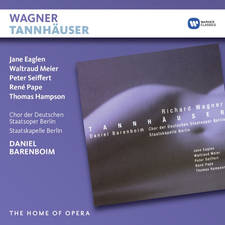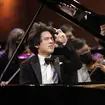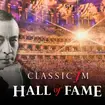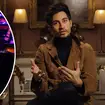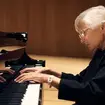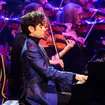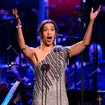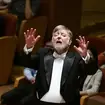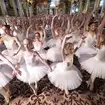Rachmaninov - A Life
One of today’s most beloved composers, Rachmaninov battled against public criticism and private insecurities to win favour for his romantic works.
What does the name Sergei Rachmaninov conjure up? Perhaps it’s the soaring lines of his much-loved Second Piano Concerto, the ebullient virtuosity of the Rhapsody on a Theme of Paganini, or the pathos of the slow movement of the Second Symphony?
Today, we acknowledge Rachmaninov as the ultimate Romantic, a composer at once noble and passionate, and it’s difficult to imagine a time when his music was not well received, so directly does it speak to us. But, as so often with composers now considered great, his music didn’t always get the reception it deserved.
This may partly have been because Rachmaninov was born out of his time, in 1873, just a year before Schoenberg and Ives, two years before Ravel, and a year after Vaughan Williams. By the time he died, in 1943, the Second World War was raging and, among Russian composers, Shostakovich and Prokofiev were pre-eminent while Rachmaninov had long been considered old-fashioned.
Indeed, it seems amazing that only a decade after his death the iconic Grove Dictionary of Music and Musicians dismissed him for his “artificial and gushing tunes.” It went on to say: “The enormous popular success some few of Rachmaninov’s works had in his lifetime is not likely to last, and musicians never regarded them with much favour.”
Rachmaninov was born into a family of comfortable means but learned hardship early on; his father squandered the family money, his sister Sofiya died in a diphtheria epidemic shortly after the family moved to St Petersburg, and then his parents separated. Further tragedy struck when Rachmaninov’s elder sister, Elena, died just before he was due to join her in Moscow, where she’d been accepted by the Bolshoi Opera. So he found himself alone in an alien city, aged 12, under the strict regime of his piano teacher Nikolay Zverev and, later, Alexander Ziloti.
When Rachmaninov left the Moscow Conservatory seven years later, in 1892, having composed his one-act opera Aleko as a graduation piece, it was with the Great Gold Medal – the highest possible award. The same year he composed his Prelude in C sharp minor for piano, which became an enormous hit, with audiences clamouring to hear him play it wherever he went. He became heartily sick of its fame and it subsequently gained a life of its own in arrangements ranging from accordion and banjo to military band and trombone quartet.
It’s ironic that other works, regarded as masterpieces today, were far less warmly received. Most infamous was the disastrous premiere of the First Symphony, an event Rachmaninov had been eagerly anticipating for two years. It took place in March 1897 in St Petersburg under the baton of Alexander Glazunov, who was at best incompetent and, according to some, actually drunk. The critics brutally dismissed the work and it was never again performed during Rachmaninov’s lifetime.
The composer retreated, devastated and unable to compose. He turned instead to conducting and was appointed deputy conductor at the Moscow Private Russian Opera Company. This position gave him much-needed focus and a source of income, and it was also where he met Feodor Chaliapin, a singer with whom he formed a lifelong friendship.
He was thrown in at the deep end – he was expected to conduct Glinka’s A Life For The Tsar on a single rehearsal – but things gradually improved and he went on to conduct many operas, including Saint-Saëns’s Samson et Dalila, Bizet’s Carmen, Gluck’s Orpheus and Eurydice and Russian works including Rimsky-Korsakov’s May Night and Dargomïzhsky’s Rusalka.
Rachmaninov’s compositional silence – which lasted more than two years – was finally broken through sessions with the hypnotist Dr Nikolay Dahl, who helped him as much through cultural conversation as through his medical intervention. Rachmaninov repaid the favour by dedicating his Second Piano Concerto (1901), to Dr Dahl. But even this work, which was such a resounding success from the very first, had Rachmaninov doubting his abilities.
Just days before the first performance he wrote: “To my mind the whole movement [the first] is spoilt… I’m in despair.”
This insecurity dogged him all his life and the slightest criticism would lead him to wield his editing pen, often over-zealously, over his music. Public reaction could make or break a work in his eyes. However, he was greatly encouraged by the positive response to his Second Piano Concerto and shortly afterwards produced his luscious Cello Sonata and his first major choral work, Spring, in which Chaliapin sang the baritone part in its St Petersburg premiere.
Today, we tend to overlook Rachmaninov the vocal composer in favour of his orchestral and piano works. Yet this is to miss out on his lustrous songs, which offer in microcosm the essence of Rachmaninov, and his innate love of words, which are so tellingly set in pieces such as The Bells and his religious works.
It was after composing Spring that Rachmaninov made the surprise announcement that he was to marry his cousin, Natalya. This caused something of a stir as, theoretically, in Russia first cousins weren’t permitted to marry, but marry they did and in May 1903 their daughter Irina was born. She was a sickly child and her many illnesses caused Rachmaninov much worry.
The political situation in Russia was becoming increasingly unstable and in 1906 Rachmaninov decided to move his family to Dresden where he could concentrate more fully on composition. He began work on another opera, Monna Vanna, but interrupted it with his Second Symphony, which was premiered under the composer’s baton in 1908 in St Petersburg.
Rachmaninov continued to move his family (a second daughter, Tatyana, was born in 1907) between Russia and Dresden, composing other major scores such as The Isle Of The Dead. A perfect example of Rachmaninov’s ability at tone-painting, this orchestral work uses the traditional Dies Irae chant, a recognisable theme that the composer, who was both fascinated by and terrified of death, used extensively.
Between 1909 and 1910, Rachmaninov toured America for the first time, during which he premiered his Third Piano Concerto. On his return to Russia he wrote his 13 Piano Preludes, Op.32, and his Liturgy of St John Chrysostom, an unaccompanied choral work on a grand scale that was preparation for his famous All-Night Vigil: Vespers of 1915. From this time dates another of his most evocative scores, and his personal favourite, The Bells – a choral symphony setting a text by Edgar Allan Poe. Again, death is a central motif and Rachmaninov conjures it up with sumptuous scoring and hypnotic melodies.
Perhaps it’s hardly surprising that mortality was uppermost in the composer’s mind, with the ravages of the First World War evident everywhere and growing instability in Russia. Rachmaninov was desperate to get his family away, and he accepted an invitation to perform in Stockholm to do precisely that, the family escaping in December 1917 with little more than the clothes on their backs. He was never to return to his homeland.
Rachmaninov now found himself in a desperate situation: he was 44 and he knew that composition wasn’t going to provide for his family, so he launched a third strand of his musical career, as a concert pianist. He saw America as the future, if only for financial reasons, and from his arrival there in 1918 he found himself in great demand, so much so that composing became limited to the summer months.
Things reached fever pitch in the 1922-23 concert season when he gave no fewer than 71 performances between November and the end of March. Thereafter, he resolved to reduce his concerts to a more manageable level and to spend more time in Europe.
In 1926, he wrote his Fourth Piano Concerto hoping to follow the great success of the previous two, but it was indifferently received. Continually moving between America and Europe, Rachmaninov could find nowhere to settle comfortably until he visited Switzerland. Buying a site outside Lucerne, he built a villa that was to provide a respite and haven from the outside world.
It was particularly timely as Rachmaninov found himself on the receiving end of the wrath of Soviet Union officialdom following the publication of a critical letter that he’d written about the regime. His music was banned in Russia, allowing for neither its study nor its performance.
Further blows followed as his Variations On A Theme Of Corelli (1931) and his concerts in both America and Paris received cool receptions. Rachmaninov wrote little more; the Rhapsody On A Theme of Paganini, which was finished in 1934, and the Third Symphony (1935-36). His last work was the Symphonic Dances, completed just three years before his death.
By the time of his final tour in 1943 he was already seriously ill with lung cancer brought on by a lifetime of heavy smoking. It seems almost prophetic that his final recital (on February 17, 1943) included Chopin’s Second Piano Sonata, with its famous funeral march. He died a month later.
Rachmaninov composed over 40 major works before being exiled and a mere handful in the 26 years after leaving Russia. He once wrote: “I feel like a ghost wandering in a world grown alien… I cannot cast out the old way of writing, and I cannot acquire the new. I have made intense efforts to feel the musical manner of today, but it will not come to me.” It was an unfitting end for this great Russian who never lost his essential voice or his intense love for his home country.
The Essential Collection
For the complete picture
Symphonies Nos 1-3; The Bells; Symphonic Dances; The Isle of the Dead Concertgebouw Orchestra/Vladimir Ashkenazy
Revel in Rachmaninov’s innate ear for orchestral colour and the vivid sound-pictures he creates in The Isle of the Dead, The Bells and his very last score, Symphonic Dances. As well as Symphony No.2, with its sublime slow movement, there’s also the chance to enjoy here the rehabilitated Symphony No.1 and the lyrical and ultimately jubilant Symphony No.3.
Decca 455 7982
For sweeping melodies
Piano Concertos Nos 1-4, et al. Stephen Hough (piano), Dallas SO/Andrew Litton
Rachmaninov’s concertos are the pinnacle of the Romantic piano repertoire, with soaring melodies full of passion and virtuosity. Although the pianist is centre stage, the orchestral writing is just as brilliantly inventive.
Hyperion CDA67501/2
For composer as pianist
Complete Recordings Sergei Rachmaninov (piano)
A unique insight into Rachmaninov’s mind and some of the greatest piano playing you’ll ever hear, both in his own works and pieces by Mozart, Beethoven and Chopin, as well as his wonderful transcriptions of Bach.
RCA 82876 67892-2
For virtuoso drama
Piano Sonata No.2, et al. Yevgeny Sudbin (piano)
Rachmaninov’s Piano Sonata No.2 is a grand, sweeping work that delights in opulent pianistic textures and powerful drama. The turmoil of its outer movements is set in extreme contrast to the quasi-religiosity of the slow movement.
BIS BIS-SACD-1518
